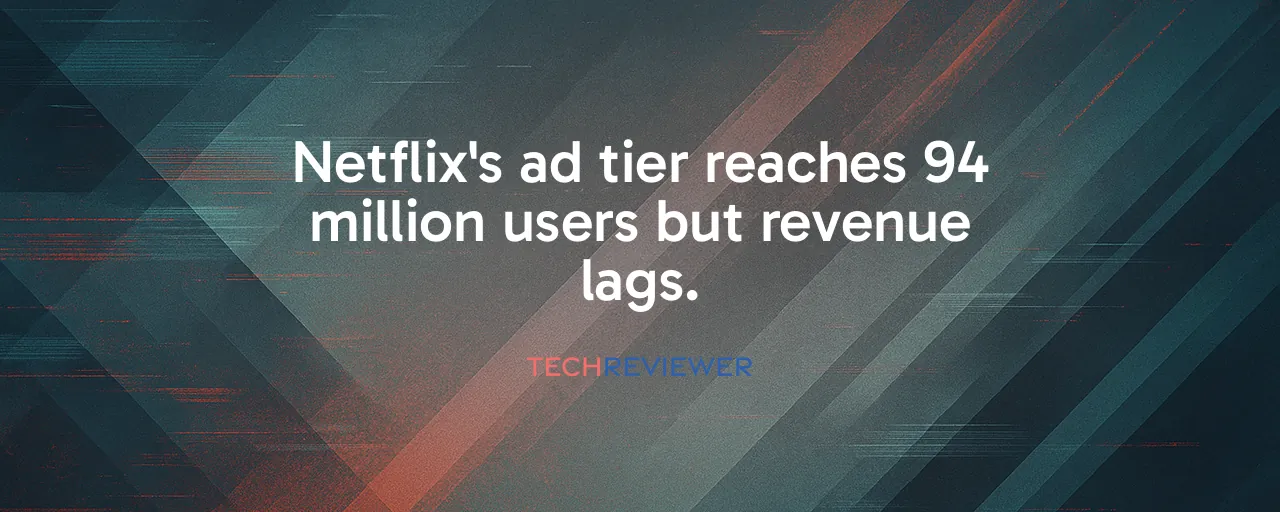Netflix's Big Bet on Ads Takes Off
Netflix's ad-supported tier, launched in November 2022, has exploded to 94 million monthly active users by May 2025. That's a staggering leap from just 5 million users two years earlier, showing the streaming giant's pivot to ads is resonating with price-sensitive viewers. The tier, priced at $7.99 monthly, now accounts for over half of new subscribers in markets where it's available. Yet, the $662.3 million in ad revenue for Q3 2025 represents only 5.8% of the company's $11.51 billion total revenue. This gap raises a pressing question: can Netflix turn its massive ad-tier audience into a true revenue powerhouse?
The shift to ads marks a dramatic reversal for Netflix, which spent years championing an ad-free experience. Facing subscriber losses in 2022 and fierce competition from Disney Plus and HBO Max, the company embraced a hybrid model. Now, with a $120 billion stock rally in 2025, investors are watching closely to see if ads can justify the hype. The answer lies in how Netflix balances user experience with revenue growth, a challenge that's trickier than it seems.
Why Ads Are Netflix's New Frontier
Netflix's ad tier isn't just about attracting new users; it's about redefining how the company makes money. The platform's proprietary Netflix Ads Suite, rolled out globally by late 2025, lets advertisers target audiences across over 100 interest categories using first-party data. This tech, built after ditching Microsoft's ad infrastructure, gives Netflix control over pricing and targeting. Viewers spend an average of 41 hours monthly on the platform, with ad attention rivaling content engagement, making Netflix's inventory a goldmine for advertisers willing to pay premium rates.
But the numbers tell a different story. Despite the ad tier's growth, its revenue contribution lags, with subscribers generating far less per user than the $16.64 global average for premium plans. Wall Street analysts, like those at JPMorgan, project ad revenue could hit $2.9 billion in 2025, but that's still a fraction of Netflix's $45 billion revenue target. The company's low ad load of four to five minutes per hour keeps users happy but limits inventory. Scaling ads without alienating viewers is Netflix's tightrope walk.
Learning From Hulu and Amazon
Hulu's hybrid model, launched in 2008, offers a blueprint for Netflix. With a $9.99 ad-supported tier, Hulu generates over $3 billion annually in ad revenue, proving ads can be a major driver without sacrificing user loyalty. Hulu's success comes from balancing moderate ad loads with a robust content catalog, keeping viewers engaged while monetizing effectively. Netflix, with its premium branding and low ad load, aims for a similar sweet spot but faces pressure to increase ad frequency to boost revenue.
Amazon Prime Video, by contrast, took a bolder approach, defaulting its U.S. subscribers to ads unless they paid extra to opt out, creating a massive ad audience overnight. This move sparked backlash but delivered scale Netflix can't yet match. Amazon's strategy highlights a key lesson: rapid ad adoption can drive revenue but risks user frustration. Netflix's more cautious approach, prioritizing quality over quantity, may preserve its brand but could slow its ad revenue growth compared to competitors.
The Monetization Puzzle
Netflix's ad tier faces a core challenge: its users drive growth but not enough revenue. Over 50% of new subscribers choose the ad tier, yet it contributes just 5.8% of Q3 2025 revenue. Advertisers, skeptical of Netflix's $30-50 CPM rates, often negotiate lower prices, forcing the company to choose between premium positioning and higher ad volume. Licensing restrictions also limit some content from showing ads, reducing the tier's appeal for certain viewers.
The password-sharing crackdown offers a silver lining. By converting non-paying users into ad-tier subscribers, Netflix built a funnel that boosted its ad audience without heavy marketing costs. Still, analysts warn that without higher ad loads or price hikes, the tier's revenue won't scale fast enough to match its user growth. Netflix's decision to stop reporting subscriber counts in 2025 shifts focus to profitability, putting pressure on ads to deliver.
What's Next for Netflix's Ad Play
Looking ahead, Netflix plans to roll out AI-powered ad formats in 2026, blending commercials with content themes for a seamless experience. These interactive ads, like pause-screen overlays, could command higher rates and boost engagement. Analysts predict ad revenue could reach $9 billion by 2030 if Netflix expands ad loads to 6-8 minutes per hour while keeping churn low. But privacy concerns loom, with regulators scrutinizing data-driven targeting, especially for younger audiences.
The streaming industry is shifting toward ad-supported models, with 46% of subscriptions now ad-backed. Netflix's ability to capture a slice of the $17 billion U.S. streaming ad market depends on outpacing rivals like Disney and Amazon. By learning from Hulu's balance and Amazon's scale, Netflix can refine its strategy. The real test is whether it can keep its 94 million ad-tier users hooked while turning their attention into serious revenue.
